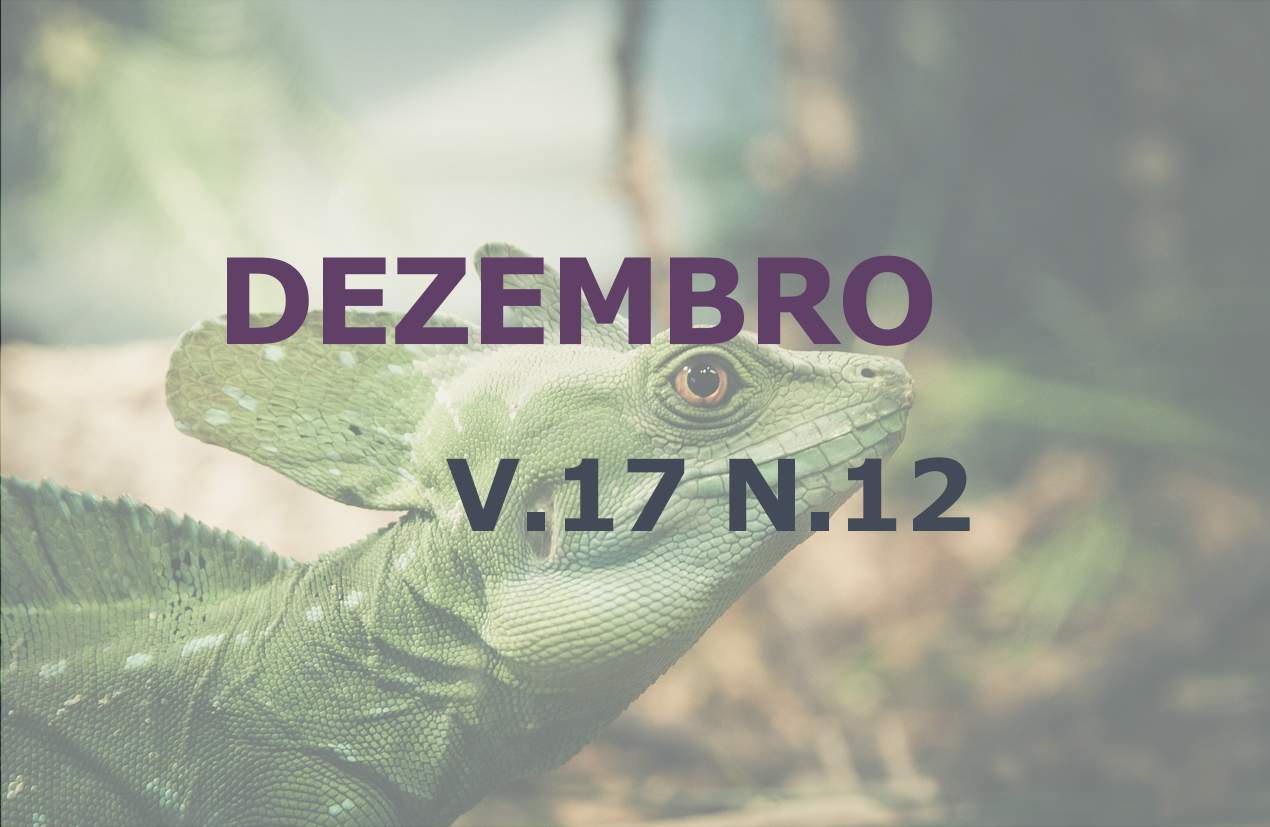Hypothyroidism in a mixed breed dog: Case report
DOI:
https://doi.org/10.31533/pubvet.v17n12e1492Keywords:
Levothyroxine, obesity, thyroidAbstract
Hypothyroidism is an endocrine disease resulting from a deficiency of thyroid hormones that cause metabolic changes. It is a disease more evident in purebred dogs, such as Boxers and Labradors, mainly affecting middle-aged dogs. But, there are also reports in mixed-breed dogs, so far without sex predilection. The clinical signs are varied and, in most cases, non-specific, such as lethargy, weight gain with normophagia, thermophilia, as well as dermatological, neuromuscular and reproductive changes. The main laboratory findings are non-regenerative normochromic normocytic anemia and hypercholesterolemia, as well as increased alkaline phosphatase. In less frequent cases, it is possible to identify hyponatremia and increased alanine aminotransferase. The diagnosis is made via the measurement of thyroid hormones (TSH, free and total T4) and the treatment of choice is levothyroxine sodium. The present study reports a case of hypothyroidism in an overweight seven-year-old mixed-breed dog. The animal was submitted to the hormone replacement treatment of choice, with a response of improvement in the clinical condition.
References
Bilhalva, M. A., Evaristo, T. A., Isnardi, C. P., Rocha, M. M., Alves, C. C., Soares, M. A., Waller, S. B., Borba, A., Santos, T. C., & Costa, P. P. C. (2020). O hipotireoidismo canino e seus efeitos sobre o sistema cardiovascular. PUBVET, 14(4), 1–6. https://doi.org/10.31533/pubvet.v14n4a542.1-6.
Campbell, K. L., & Davis, C. A. (1990). Effects of thyroid hormones on serum and cutaneous fatty acid concentrations in dogs. American Journal of Veterinary Research, 51(5), 752–756. https://doi.org/10.1016/0034-5288(92)90106-C.
Credille, K. M., Slater, M. R., Moriello, K. A., Nachreiner, R. F., Tucker, K. A., & Dunstan, R. W. (2001). The effects of thyroid hormones on the skin of beagle dogs. Journal of Veterinary Internal Medicine, 15(6), 539–546. https://doi.org/10.1111/j.1939-1676.2001.tb01588.x.
Dixon, M., Reid, S. W. J., & Mooney, C. T. (1999). Epidemiological, clinical, haematological and biochemical characteristics of canine hypothyroidism. Veterinary Record, 145(17), 481–487. https://doi.org/10.1136/vr.145.17.481.
Dixon, R. M., Reid, S. W. J., & Mooney, C. T. (2002). Treatment and therapeutic monitoring of canine hypothyroidism. Journal of Small Animal Practice, 43(8), 334–340. https://doi.org/10.1111/j.1748-5827.2002.tb00082.x.
Durval, T. de F., Mencalha, R. N., & Gaudêncio, F. N. (2020). Determinação da concentração plasmática de cTSH no diagnóstico de hipotireoidismo primário em cães: relato de quatro casos. PUBVET, 14(9), 1–5. https://doi.org/10.31533/pubvet.v14n8a646.1-5.
Ettinger, S. J., Feldman, E. C., & Cote, E. (2017). Textbook of Veterinary Internal Medicine-eBook. Elsevier Health Sciences.
Feldman, E. C., Nelson, R. W., Reusch, C., & Scott-Moncrieff, J. C. (2014). Canine and feline endocrinology-e-book. Elsevier health sciences.
Graham, P. A., Refsal, K. R., & Nachreiner, R. F. (2007). Etiopathologic findings of canine hypothyroidism. Veterinary Clinics of North America: Small Animal Practice, 37(4), 617–631. https://doi.org/10.1016/j.cvsm.2007.05.002.
Jericó, M. M., Andrade Neto, J. P., & Kogika, M. M. (2015). Tratado de medicina interna de cães e gatos. Roca Ltda.
Kalil, R. F. T. (2023). Cardiomiopatia dilatada em cão com hipotireoidismo e megaesôfago. PUBVET, 17(4), e1366. https://doi.org/10.31533/pubvet.v17n04e1366.
Kemppainen, R. J., & Behrend, E. N. (2001). Diagnosis of canine hypothyroidism. Veterinary Clinics: Small Animal Practice, 31(5), 951–962. https://doi.org/10.1016/s0195-5616(01)50007-8.
Mooney, C. T. (2011). Canine hypothyroidism: a review of aetiology and diagnosis. New Zealand Veterinary Journal, 59(3), 105–114. https://doi.org/10.1080/00480169.2011.563729.
Mooney, C. T., & Peterson, M. E. (2015). Manual de endocrinologia em cães e gatos. Roca Ltda.
Muñoz-Prieto, A., Cerón, J. J., Martínez-Subiela, S., Mrljak, V., & Tvarijonaviciute, A. (2020). A Systematic review and meta-analysis of serum adiponectin measurements in the framework of dog obesity. Animals, 10(9), 1–15. https://doi.org/10.3390/ani10091650.
Nelson, R., & Couto, C. G. (2015). Medicina interna de pequenos animais (3.ed.). Elsevier Brasil.
Panciera, D. L. (1999). Is it possible to diagnose canine hypothyroidism? Journal of Small Animal Practice, 40(4), 152–157.
Panciera, D. L. (2001). Conditions associated with canine hypothyroidism. Veterinary Clinics of North America: Small Animal Practice, 31(5), 935–950. https://doi.org/10.1016/s0195-5616(01)50006-6.
Scott-Moncrieff, J. C. (2007). Clinical signs and concurrent diseases of hypothyroidism in dogs and cats. Veterinary Clinics of North America: Small Animal Practice, 37(4), 709–722. https://doi.org/10.1016/j.cvsm.2007.03.003.
Scott-Moncrieff, J. C. (2015). Hypoadrenocorticism. In E. C. Feldman, R. W. Nelson, C. Reusch, & I. C. Scott-Moncrieff (Eds.), Canine and Feline Endocrinology (pp. 485–513). Elsevier.
Tilley, L. P., & Smith Junior, F. W. (2014). Consulta veterinária em 5 minutos. Manole Ltda.
Downloads
Published
Issue
Section
License
Copyright (c) 2023 Francielly Martins Ferreira de Alarcão, Murilo Luiz e Castro Santana

This work is licensed under a Creative Commons Attribution 4.0 International License.
Você tem o direito de:
Compartilhar — copiar e redistribuir o material em qualquer suporte ou formato
Adaptar — remixar, transformar, e criar a partir do material para qualquer fim, mesmo que comercial.
O licenciante não pode revogar estes direitos desde que você respeite os termos da licença. De acordo com os termos seguintes:
Atribuição
— Você deve dar o crédito apropriado, prover um link para a licença e indicar se mudanças foram feitas. Você deve fazê-lo em qualquer circunstância razoável, mas de nenhuma maneira que sugira que o licenciante apoia você ou o seu uso. Sem restrições adicionais
— Você não pode aplicar termos jurídicos ou medidas de caráter tecnológico que restrinjam legalmente outros de fazerem algo que a licença permita.





